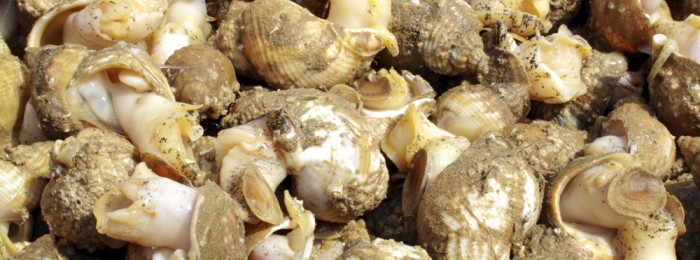01843 585310
info@kentandessex-ifca.gov.uk

01843 585310
info@kentandessex-ifca.gov.uk

Buccinum undatum Whelks are a gastropod mollusc with highly variable shell morphology and colour depending on where they are located in the UK and even within the KEIFCA district. Shells are generally solid with mature individuals having particularly heavy and robust shells. Shell is formed of 7 or 8 tumid whorls with the last whirl accounting for ~70% of shell height. Growth rate is highly variable depending on location as is size of reproductive maturity. Found from the sublittoral to 100 m depth with a preference for sand, sandy mud and stony substrates.
Females move to hard substrate areas to attach fertilised egg capsules in masses. Development occurs in egg capsules until whelks hatch out in winter. Whelks are not tolerant of warm temperatures with >29C being lethal. Whelks are a carnivorous predator and active scavenger using chemo-sensors to smell food in the water. Common prey includes tube-dwelling polychaete worms, small bivalve molluscs such as cockles and any carrion available. Predators found to prey on whelks include cod, dogfish, crabs, rays, flatfish and starfish.
Predation by starfish on disorientated whelks returned by trawlers has been shown to be significant. Whelk egg masses are predated on by sea urchins and starfish while the empty shells of dead whelks are inhabited by hermit crabs which rely on gastropods such as whelks for a shell to shelter. As hermit crabs grow they need to change to increasingly larger empty shells, therefore it is important for whelks of all sizes to be present in a population in any given area.
Between 2018 and 2020 KEIFCA undertook a European Marine Fisheries Funded (EMFF) project. The aim of the project was to determine the size-at-maturity of whelks across the KEIFCA district, and from this, assess the effectiveness of KEIFCA’s minimum landing size of 53 mm shell length at protecting immature breeding stock. For a copy of the report click here
© Kent & Essex IFCA 2026 - All Rights Reserved | Privacy Policy